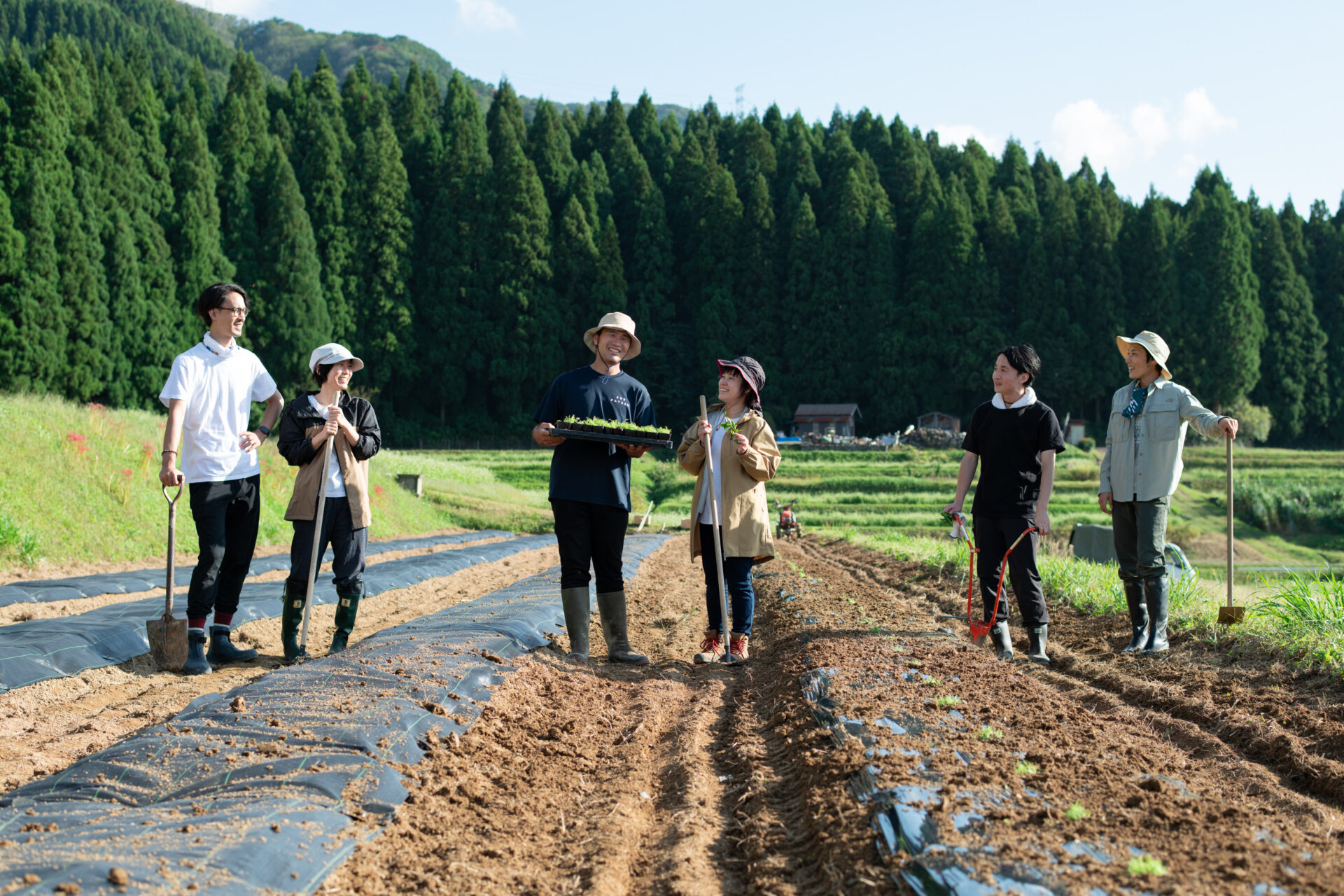The Paysan Herb Farm is an agricultural and social cooperative that operates in Ishikawa Prefecture. In our previous article, we introduced the secrets behind the cultivation of their delicious herbs.
Roughly two months after that interview, the DIG THE TEA team headed back to Ishikawa Prefecture last October.
Being struck by PAYSAN’s innovative methods of farming under a new framework of agriculture and social cooperatives and decided to conduct a joint experimental project with them.
We refer to DIG THE TEA as a “sandbox media” and just as children let their imagination run free as they play in a sandbox, we aim to use media as our playground as we explore new ways to enjoy moments like tea time. Our hopes behind this new project stems from this goal.
In the past we have explored making Awabancha tea in Kamikatsu, Tokushima Prefecture and had a top mixologist create a new cocktail using that tea.
For this experimental project we will be working with President of Potager.inc Tomohiko Sawabe, who operates the PAYSAN Herb Farm and we will cultivate an unused area of their farm to grow a variety of herbs.
Through several preliminary discussions, we have decided to start with plants that suit the local climate and soil such as stevia, lemongrass, holy basil, dill, mugwort, German chamomile, and peppermint.
For our first visit we worked on making planting rows in the field and planting chamomile, which will survive the winter months. Here is our report on the start of our new farming experiment.
An experimental farm in the valleys of the Hakusan mountain range
The PAYSAN Herb Farm is located in the Kahokugata region of Ishikawa Prefecture, near the sea, but they also have farmland in Hakusan City which is about a 50 minute drive away.
A pleasant breeze blows through the terraced fields of this land which is located in a valley surrounded by mountains.
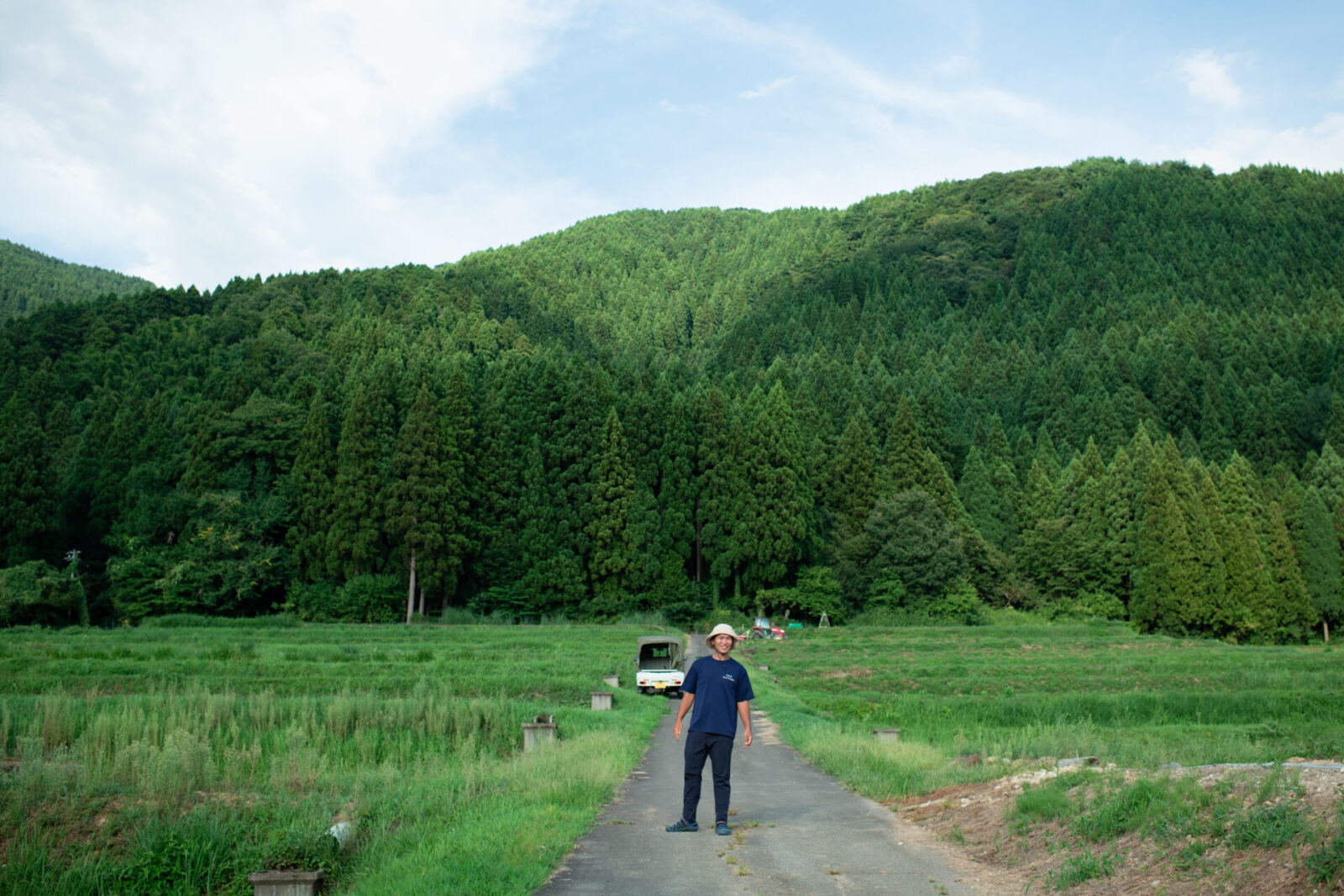
This land was previously a terraced rice field. PAYSAN now manages the land and they are planning to use it as an experimental field to grow herbs and plants they have not worked with before.
Of the 10 fields on the property, one field (about 100㎡) will be designated as the joint experimental site with DIG THE TEA.
On the day we arrived, Sawabe was tilling the soil with a tiller and preparing the land. Although the soil was moist from rain the day before, the weather was beautiful with a clear blue autumn sky and we were greeted by Sawabe’s cheerful energy.
PAYSAN’s staff member Ai Kunori, who is in charge of herb blending, had prepared a hand-drawn planting chart for us to guide us for the day’s work.

The plan was to work on three main processes that day and we split up the tasks as follows.
- Make four planting rows
- Cover the rows with mulch
- Plant the chamomile seedlings
Mountain spring water purifies the soil
The first step was to make four planting rows. We adjusted the soil in order to even out the height of the rows and used a rake to flatten it out.
If there were any large stones in the soil, they were removed because they hinder the growth of the plant roots.

Adding height to the rows helps to improve drainage of excess water. The higher it is the more water that drains out of the sides and the faster the soil dries out.
“In places where there is not a lot of rainfall, it is not necessary to add so much height to the planting rows, but this Hokuriku region gets a lot of rain so it is common practice to make high planting rows here. If the soil retains too much water it will lead to root rot and kill the plants. It is important to create an environment that prevents that from happening.”
Although there were parts of the field that were muddy from the heavy rain that fell the day before, thanks to Sawabe’s work in tilling and preparing, the soil was very soft and easy to work with. The DIG THE TEA team members were able to work quickly with the rake to remove stones and even out the rows.

As we worked we asked Sawabe if this land is suitable for herb cultivation and he replied, “It is not particularly good soil because it is just a field that was made by scraping the sides of the mountains.”
“However, the water here is excellent. We store spring water from the mountain in a reservoir and use it to water the plants. Although we let nature take its course when we cultivate our herbs and we don’t go out of our way to water the fields, even when this land was used for rice they used the mountain spring water so there is no unnecessary residue from water here.”
“This means that the soil here has been purified by the clean mountain water. Although there may not be a lot of nutrients in the soil I think that for better or for worse it is suitable for the pesticide and fertilizer free method of herb cultivation that we practice as PAYSAN.”
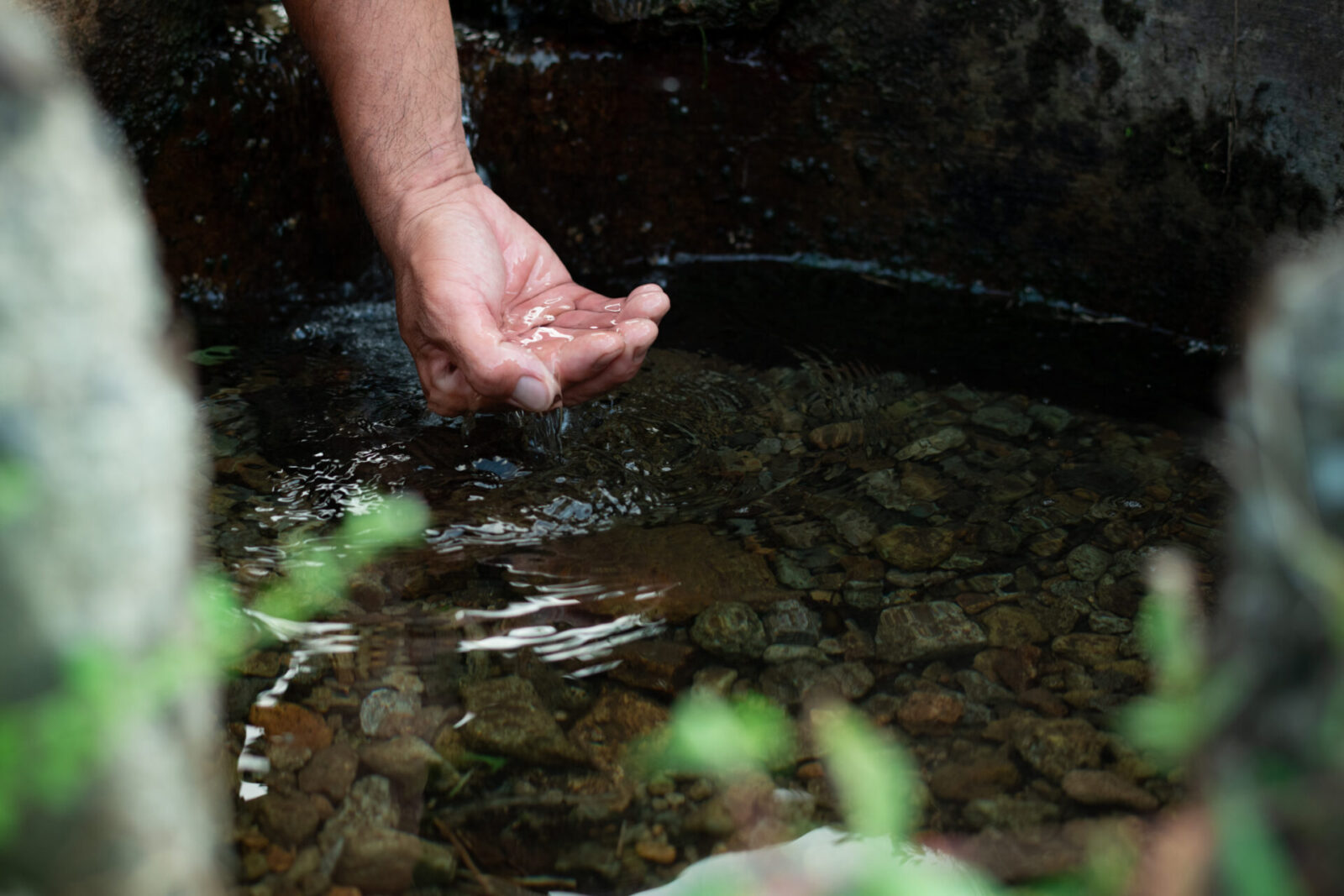
Why black mulch is used for the chamomile rows
Step 2 was to lay down the mulch.
Mulch is a farming material that is used to cover the surface of planting rows. For our herbs we decided to cover the rows for planting chamomile with a black plastic mulch sheet. For the other rows which will be planted next spring, we opted to use a slightly thicker black plastic mulch to prevent weeds from growing.
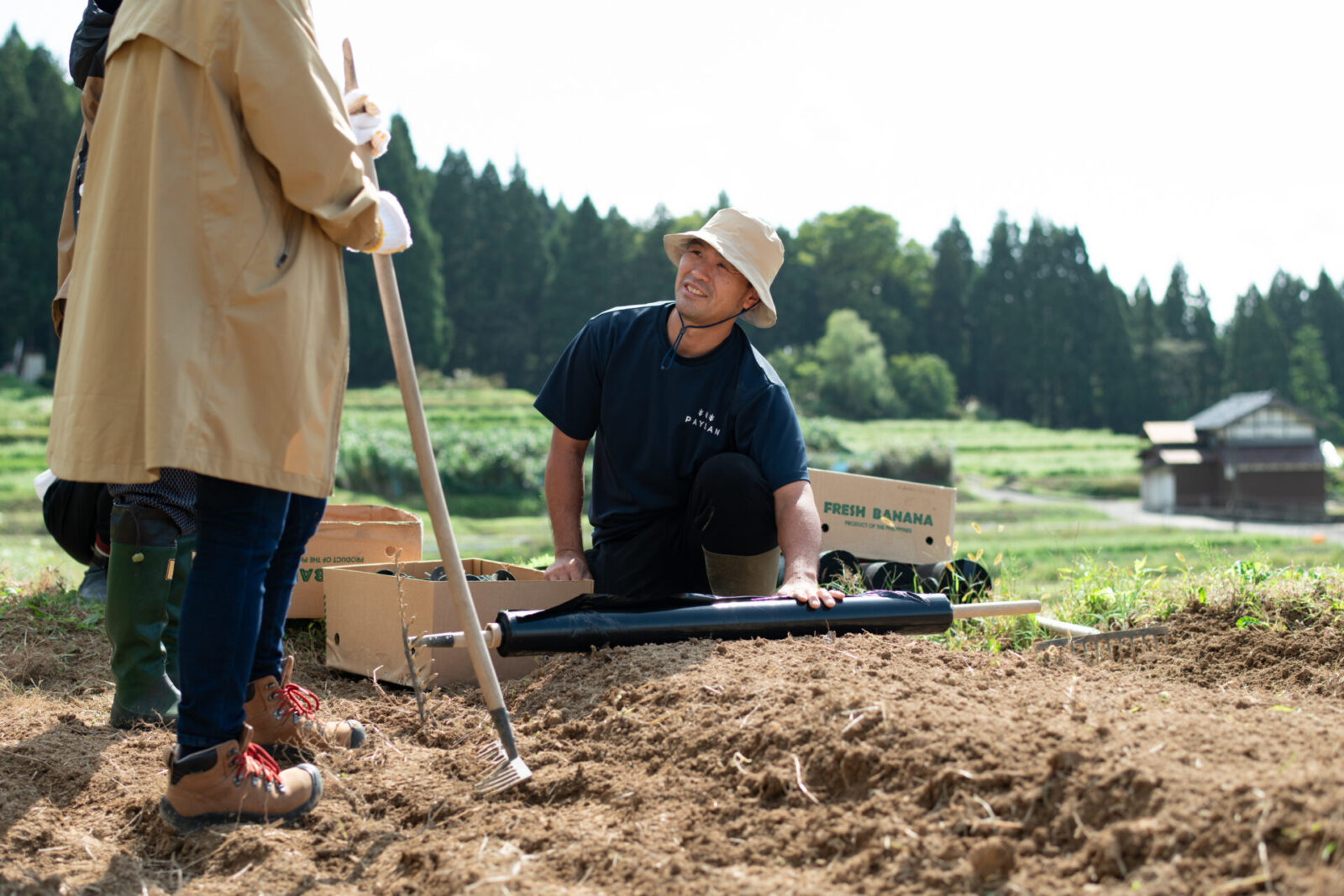
There is a reason why the black mulch will be used on the chamomile rows.
“Chamomile goes dormant during the winter months, but when the temperature rises in early spring it starts to grow rapidly and it will flower around May. The reason we cover the plants with mulch is to help the soil temperature rise faster in early spring. It is like covering the soil in a greenhouse.”
“It also helps to prevent weeds from growing and protect the rows from erosion from heavy rain and snow in the coming months.”
We began by covering the rows with the black plastic sheets. Two people rolled the plastic sheet out while another person pinned the plastic sheet to the ground.

The key to laying out the plastic sheet mulch was to put the rake handle through the core of the sheet. This way, two people can hold the ends of the rake to roll the sheet over the planting rows. Lastly, soil was put on both sides of the sheet to bury it in the ground and this process was done by a machine that Sawabe provided.
We took turns laying the sheets on each row and the work proceeded smoothly.
Sawabe commented, “I’m surprised how good you all are at this. At this pace we will finish today’s work in no time.”

The DIG THE TEA members that participated in the day’s work were the same members who experienced making Awabancha tea in the grueling summer heat. It seems that experience made us stronger and we found to be at ease with the farm work at the herb farm.
Who knew that our tea making experience would contribute in such a way for us in the future!
Planting the chamomile seedlings
After taking a short break we proceeded to the highlight of the day, which was Step 3 of planting the chamomile seedlings.
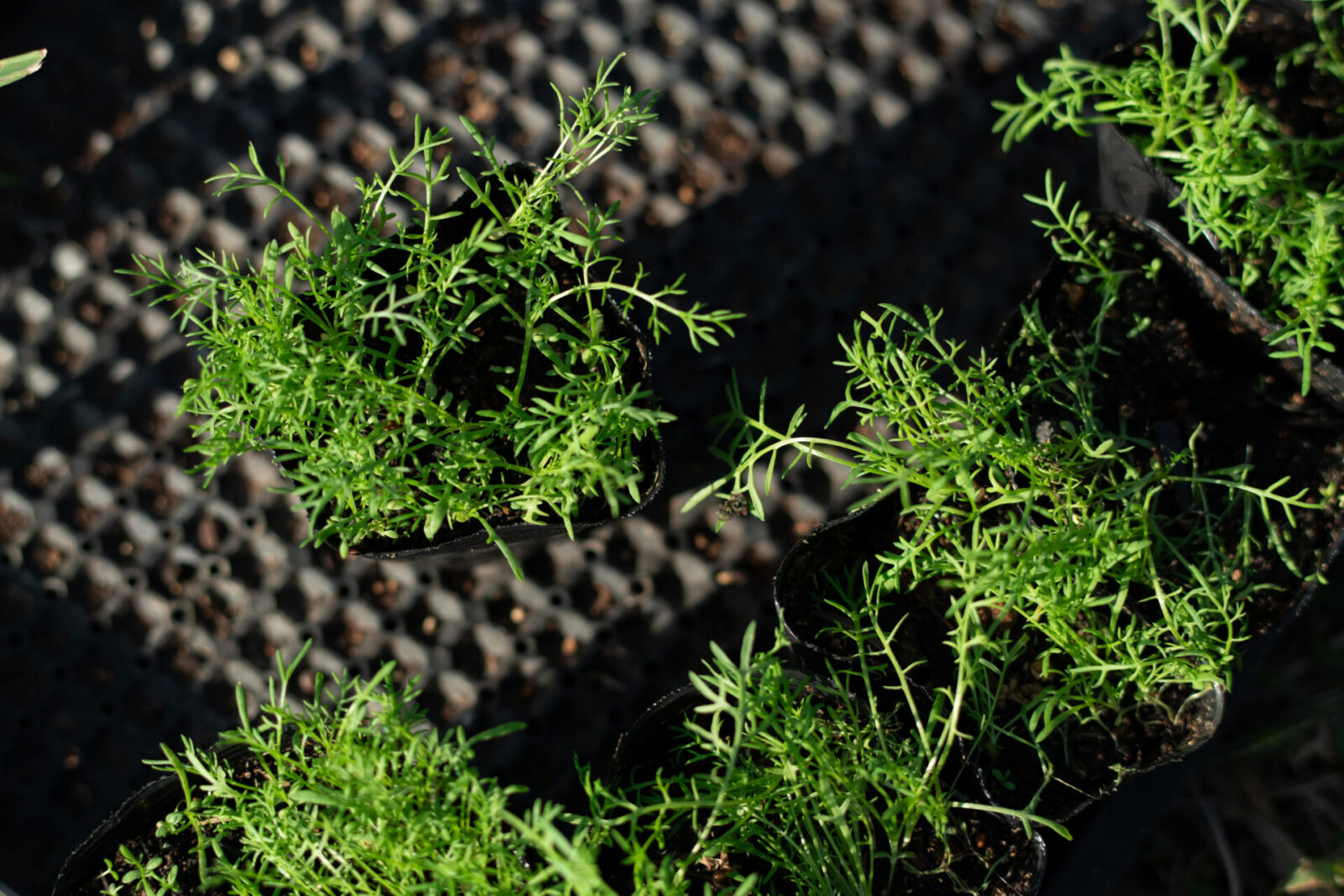
The seedlings in the black pots were germinated from seeds that were collected and grown in the PAYSAN garden this year. The young seedlings were adorable with their leaves spreading out vigorously in all directions.

Using a special tool we made evenly spaced holes in the black plastic mulch sheet and carefully removed the seedlings from their pots to bury in the holes.
Lastly, we use a shovel to scoop a cupful of soil to cover the planted seedlings. It was the first time for all of us to use this special tool and it took some time to get the hang of it.
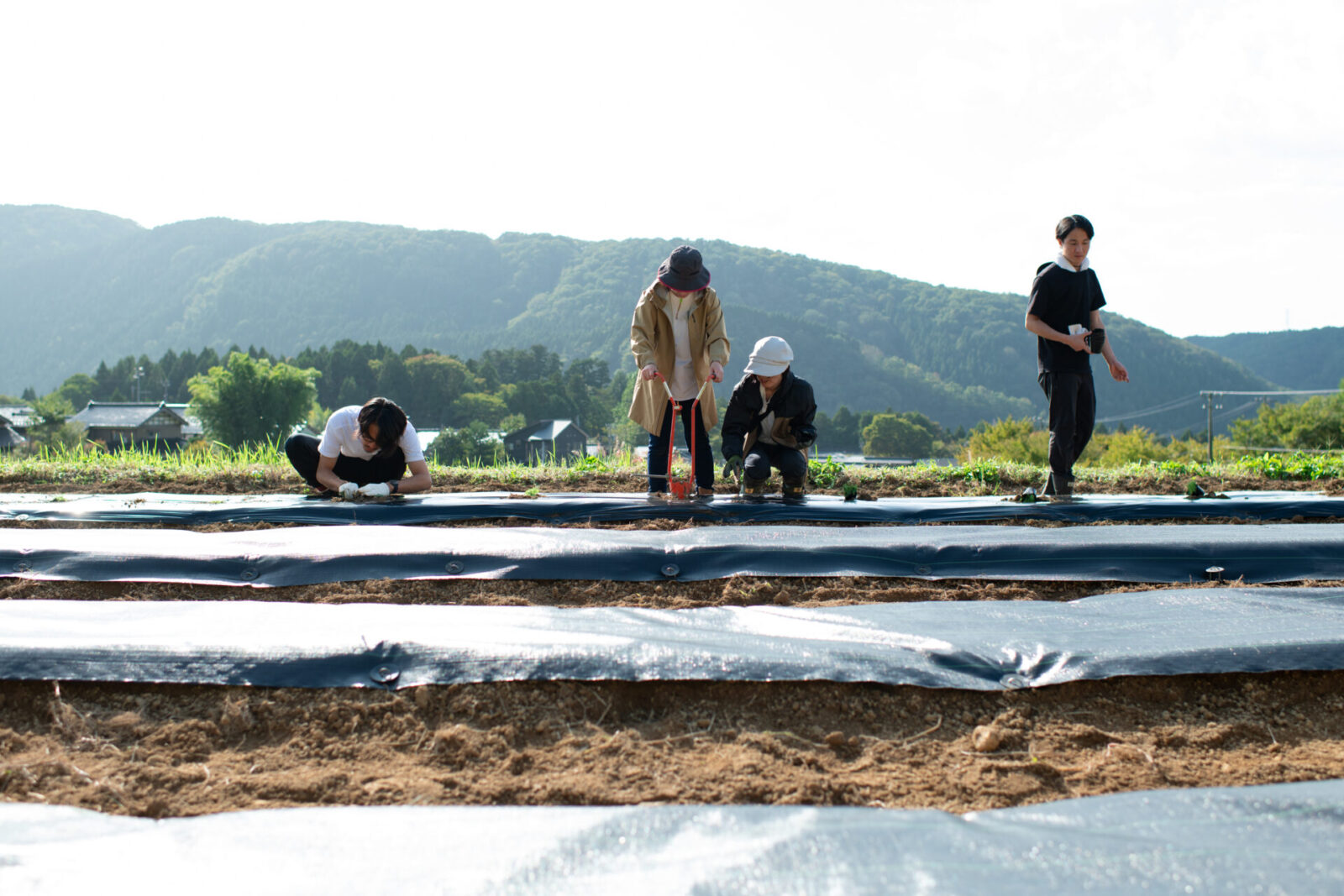
We worked as a team with one person placing the seedling in the tool, one person using the tool to plant the seedling, one person covering the seedling with soil and another person collecting the empty seedling pots.
As everyone worked at a leisurely pace in their given roles, we talked about how peaceful today’s work was compared to our experience making the Awabancha tea in the grueling heat.
We encouraged each other as we worked on and laughter filled the air. Before we knew it the planting was over.


Havesting Green Shiso (Perilla)
Thanks to the stamina that we developed through our experience in making Awabancha tea, we finished the day’s work earlier than planned so we were allowed to help with other work on the PAYSAN farm. In a field a short distance away from our herb garden, we helped harvest green shiso (perilla) plants that had grown to a very large size. It made us happy that we proved to Sawabe that we are good workers.
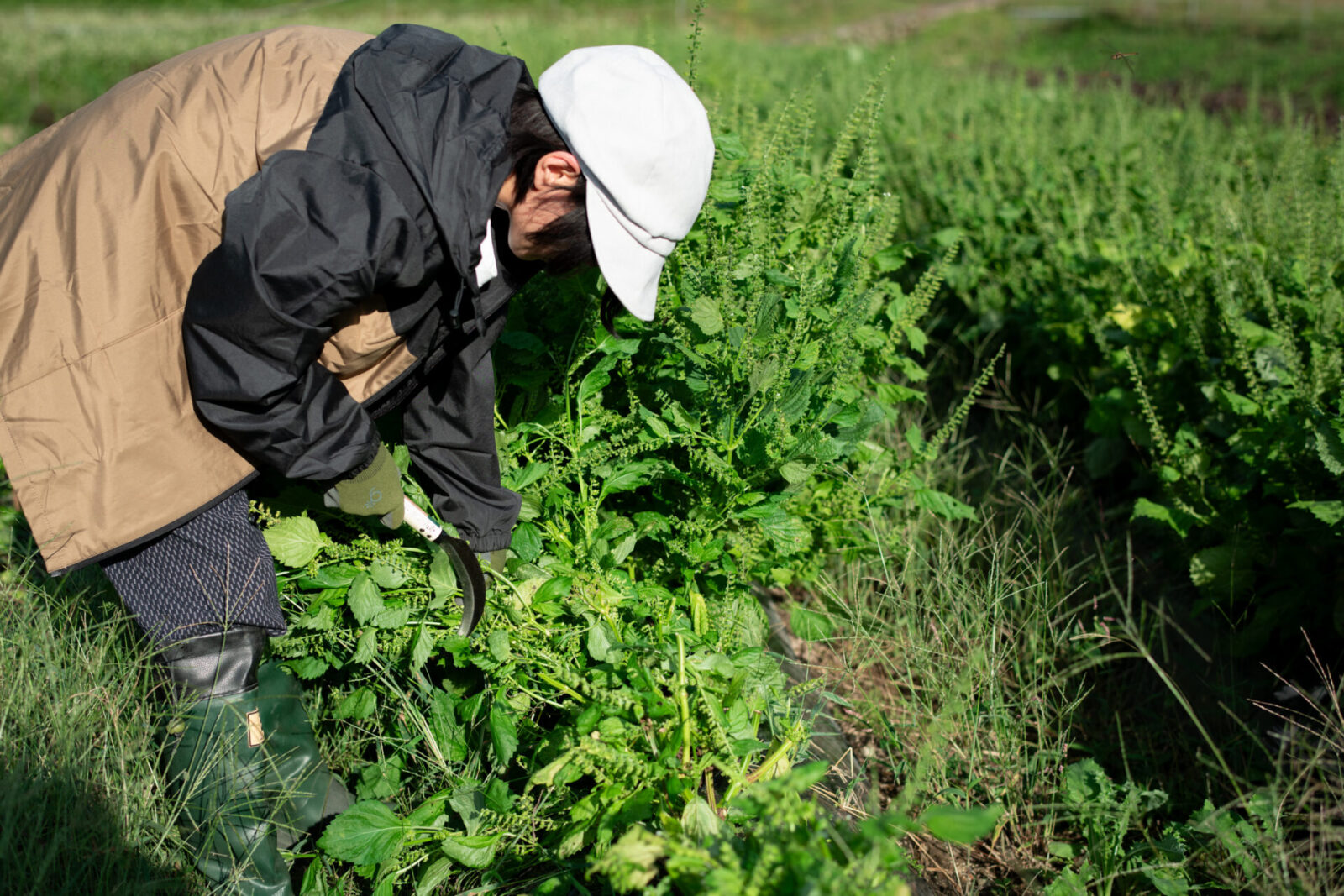
Sawabe handed each of us a sickle and we went through the rows of green shiso and harvested the whole stalks. The harvesting containers quickly filled up and the area was filled with the pleasant aroma of green shiso. After the work was over, we were filled with a blissful feeling of content for a job well done.
The shiso will be sorted into stems and leaves at the PAYSAN plant in Kahokugata Lagoon and freeze dried. Ultimately it will be used to make PAYSAN’s herb salt products.
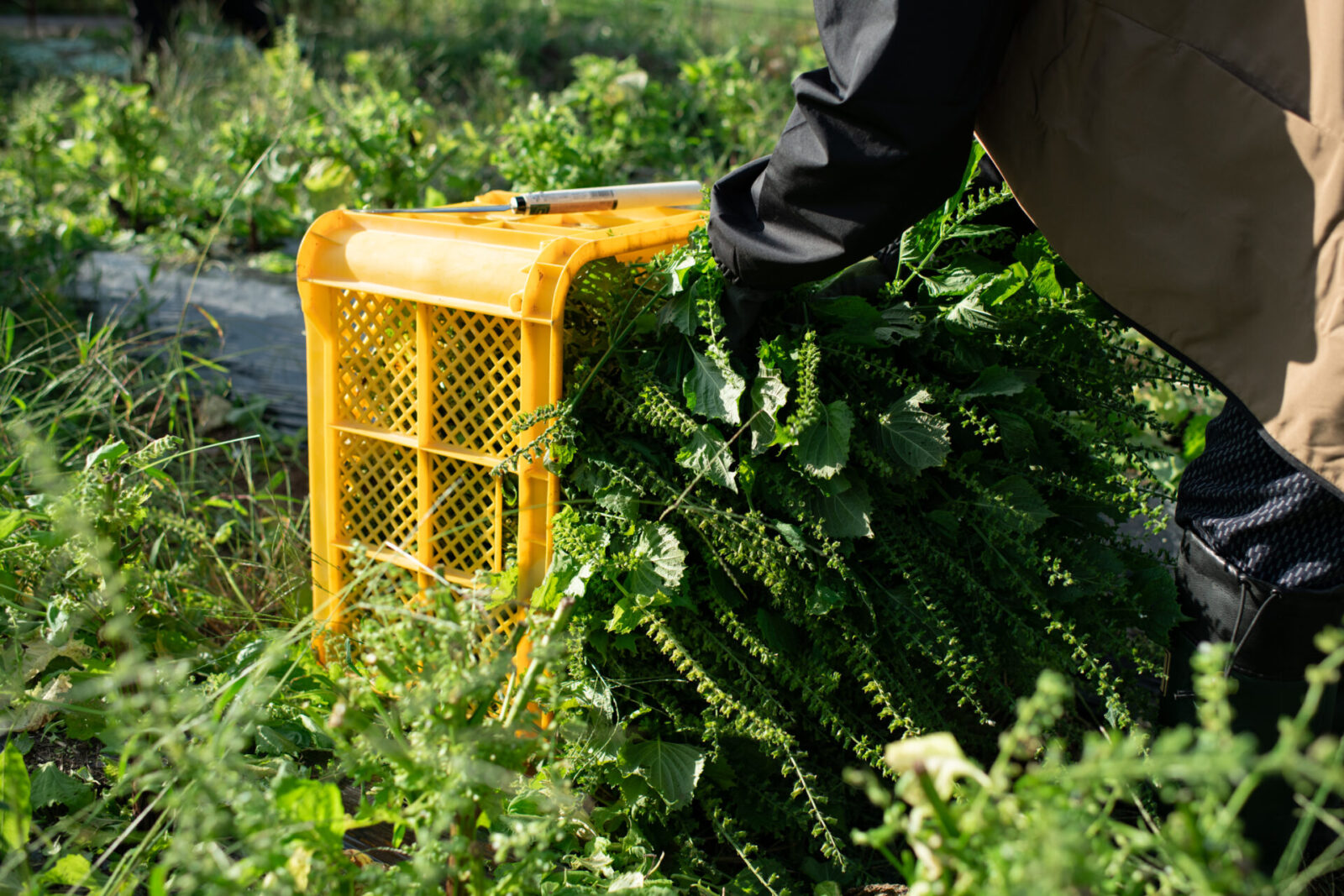
Sawabe laughed as he said to us, “I was so surprised at how well you all worked in the fields. I should have prepared more work for you!”
His words put a smile on the DIG THE TEA team members.
The work for the day was completed and we enjoyed every moment of working in the Hakusan fields.
The unique charm of the Hakusan region
While we worked in the field together, I could tell from Sawabe’s expressions and words that he was very fond of these fields in Hakusan.
PAYSAN is currently growing lemongrass, peppermint, spearmint, Japanese peppermint, yerba buena (mojito mint), and lemon balm, all of which are perennials, and they hope to add more varieties in the future. One reason they are expanding is because of the blessed environment here.
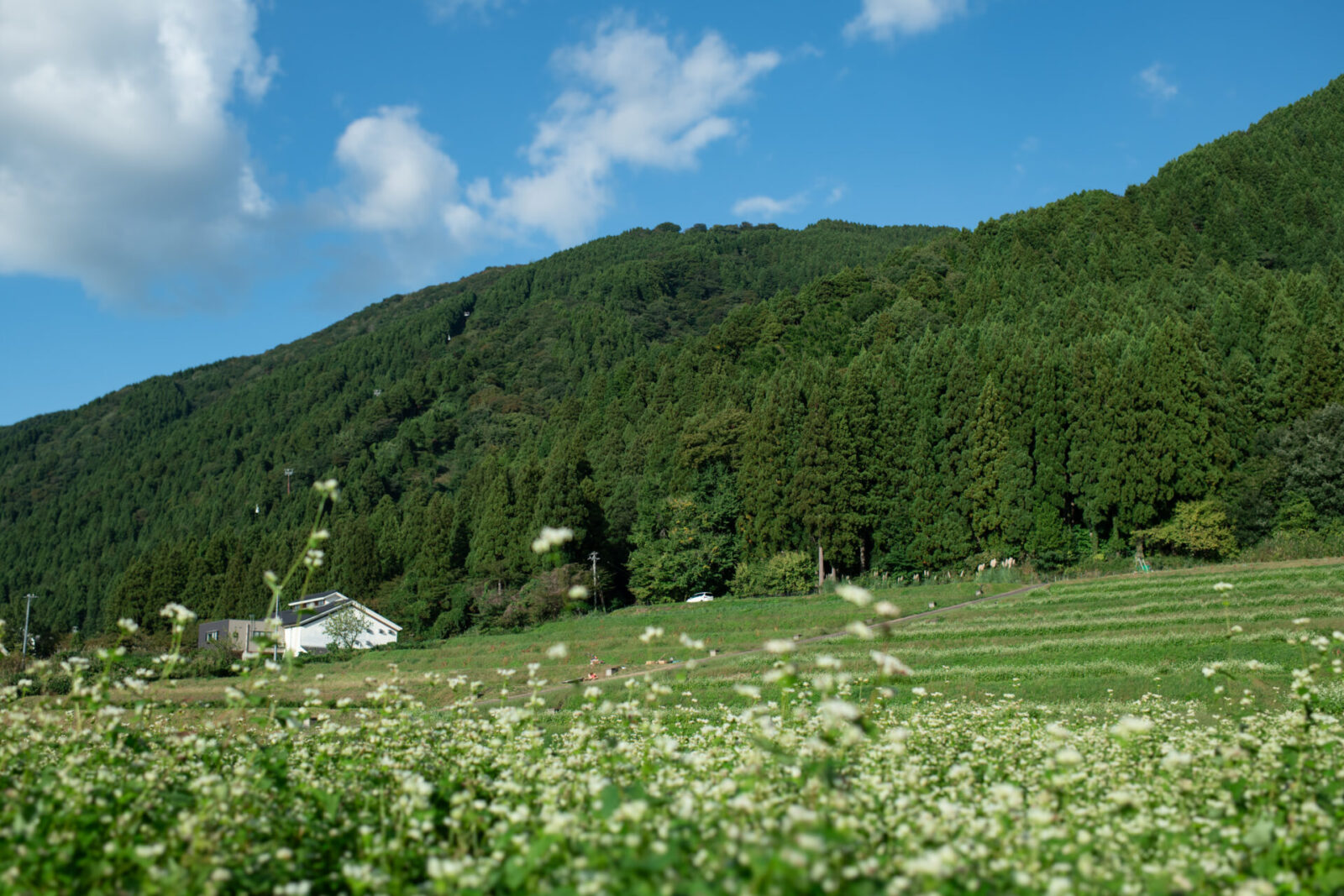
“Although the land in Kahokugata Lagoon is flat and it gets a lot of sunshine, there are times when temperatures reach 35 degrees Celsius in summer, and the leaves of the plants sometimes get burnt in the hot sun. However, the mountains here provide shade for longer hours and reduce some sun exposure. The temperatures are also cooler than the plains in the lower regions so we can grow leaf based plants better here.”
“We grew several varieties of mint this year and the leaves we harvested were better quality than those we grew in Kahokugata Lagoon. Although there is substantial snow here in the winter, we plan on growing annuals with a short harvest season and summer herbs here. There are still other unused fields in the area so we plan to operate those under PAYSAN as well and eventually turn this region into a PAYSAN Kingdom. (laughs)”
With some green shiso and chamomile seedlings to take home as souvenirs, the DIG THE TEA members headed home. We will return to these fields again next spring.
With this, we completed the first step in our experimental project with PAYSAN.
Will our chamomile plants survive the winter in the deep snow of the Hakusan Mountains? With some anticipation, we will wait until next spring to find out.
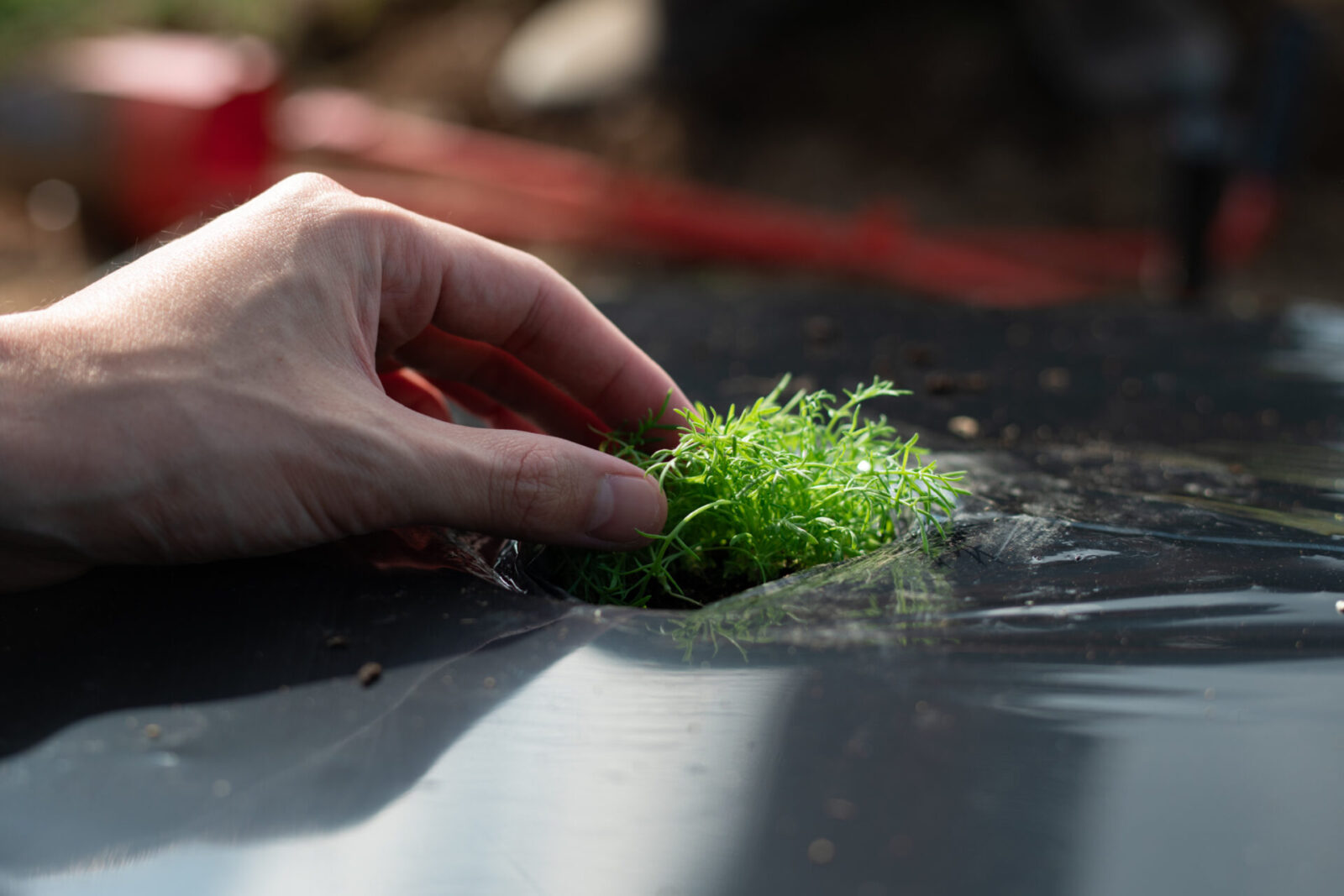
Lives in Tokyo, Japan. Became independent after working as an editor for online media sites “MYLOHAS” and “greenz.jp” and magazine “sotokoto”. Edits and writes for magazines, online media, books, and other media outlets, as well as corporate websites, on themes such as sustainable manufacturing, community development, and working styles. Also acts as director and buyer for the online store and media “ichijitu” which offers everyday products and tools that assist in everyday life.
お茶どころ鹿児島で生まれ育つ。株式会社インプレス、ハフポスト日本版を経て独立後は、女性のヘルスケアメディア「ランドリーボックス」のほか、メディアの立ち上げや運営、編集、ライティング、コンテンツの企画/制作などを手がける。
